Hawaii’s Pacific Tsunami Warning Center this morning issued a tsunami advisory, saying “a dangerous wave is on the way. Strong and unusual currents are expected along the coast, and in bays, marinas, and harbors. Move to high ground and away from the shore. More at tsunami.gov.”
Soon after that, they reported waves of from about one foot at Nawiliwili, Kauai, to just under 3 feet at Hanalei. The center added, “we are relieved that there is no reported damage and only minor flooding throughout the islands.” Back in 1946, it was a different story with the Hilo tsunami devastation pictured above.
Then the center tweeted, “the tsunami advisory is ended for the State of Hawaii effective at 0752 am HST. Small sea level changes, strong or unusual currents may persist for several additional hours in some coastal areas and appropriate caution should be exercised by boaters and swimmers.
Preparedness is key to avoiding devastation such as Hawaii has seen previously.
The history of tsunamis in Hawaii includes the most deadly one at Hilo 75 years ago.
There have been nearly 100 tsunamis in Hawaii since records were first kept about two hundred years ago. And Hawaii has seen more than its share of devastation at the hand of those tsunamis.
The word “tsunami” is Japanese for “great harbor waves.” Its height is never apparent at first until it travels up from the ocean and into more shallow waters along the coastline.
Contrary to popular belief, the surge of a tsunami does not appear as a great crashing wave. Rather, it is a powerful and fast-moving tide that can destroy homes, overturn train cars, and deposit boats several blocks inland.
In 1946, a Hawaii tsunami caused by an Aleutian earthquake was responsible for almost 200 deaths on the Big Island. It was nicknamed the Hilo Tsunami and destroyed the town’s waterfront on April Fool’s Day, as seen from the photo above.
As a result, the Tsunami Warning System was created to prevent Hawaii and other Pacific rim countries from calamity.
Then in 1960, an earthquake off Chile traversed the Pacific and killed 61 people in Hilo, and destroyed the bay with waves up to 35 feet high.
2010 Hawaii tsunami warning.
In 2010, we reported a tsunami warning that occurred when we were awakened here in the islands by government text messages and recorded phone calls warning of an impending tidal wave. That was followed at 6 am by air raid sirens. It was one of the bigger scares in recent years. The event thankfully turned into a false alarm, for reasons largely still unknown. Before the appointed tsunami arrival time, stores shuttered, and many did not reopen again. People were frightened. Roads throughout Hawaii were roadblocked, making transportation difficult to impossible. Statewide, police departments ordered to work all officers on their day off to stop traffic.
NOAA subsequently apologized but for how incorrect they were. Charles McCreery, NOAA’s Pacific Tsunami Warning Center head, admitted, “We’re still in the incipient stages of using these models to constrain our forecasts. There are still lots of improvements we need to make before we can rely on them totally for our decision making.”
2011 Hawaii tsunami shuttered Kona resort.
The Kona Village Resort closed following damage caused by a tsunami in March 2011. The resort had major damage from a storm surge, which uprooted their thatched-roof bungalows. Now, a decade later, the resort is to reopen as a Rosewood Resort in 2022.
2012 Hawaii tsunami.
Then again, in 2012, a 7.7 earthquake on the west coast generated another tsunami that officials predicted would hit the islands. None of the arriving waves were more than 2 1/2 feet, however.
USGS photo above of 1946 Hilo tsunami devastation.
Content updated on 1/15/22.
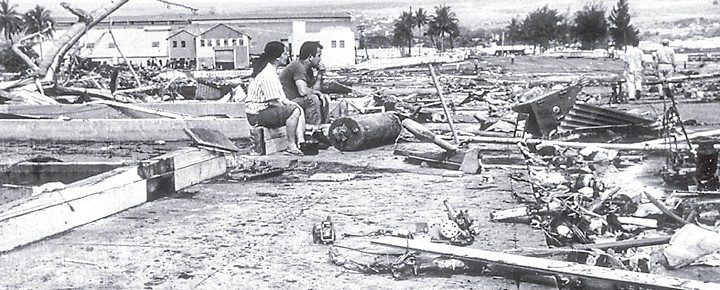
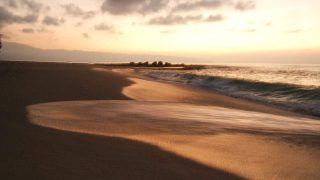
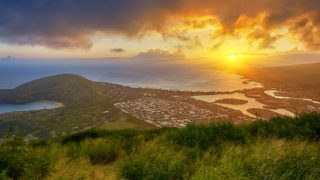
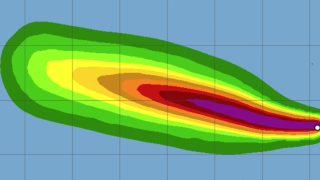

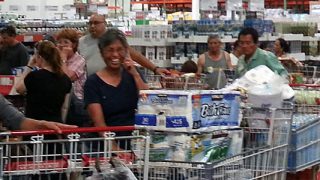
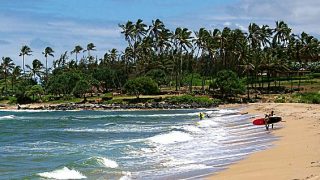
Slight correction on opening date of Kona Village in 2023!
We remember spending the night a in a grade school a good many years ago because of tsunami warning for Poipu. That just comes with parts of Hawaii.
Aloha Guys`
A few years ago we were staying at the Hapuna when announcements came out that we were to pick up purses, wallets, etc. and report to front lobby because of a tsunami warning. We were bused up to the top of a hill where everything you could need was already set up-at 7am. Beds, food, televisions, tables, chairs, etc. They fed us breakfast then lunch before being bused back to the hotel. Then they gave us all a free dinner for our “inconvenience.” The customer service was absolutely amazing.
As usual, don’t believe the hype. Less than 300 people TOTAL have been killed by tsunami’s in Hawaii in well over 200 yrs. 300 people. TOTAL. More people die from natural causes–like heart disease, stroke, and cancer in Hawaii every MONTH. But I don’t hear any sirens or warnings about THOSE deaths… do you? About the same number of people DROWN in Hawaii every 4 years than have been killed by tsunami’s in the past 200+ years. But does that keep anyone from swimming in the ocean? Not really. You’re definitely WAY more likely to be killed in a traffic accident–or by some meth tweaker–or your husband / boyfriend–than you are by a tsunami. Let’s focus our attention and energy on the REAL dangers around us… not these silly, hyped up ones.
2011 Japan Tsunami – 20,000 approx. final total dead, most by drowning; 2010 Sumatra 509 dead. I’ve been in Hawaii for two tsunami warnings and am very happy that they were mild events. I’d rather be “inconvenienced” than caught unaware.
We were staying in Poipu in I think 2012. There was a banging on our condo door at about 10:30 at night and we were told there was tsunami on the way and that we had to evacuate. They put us up in a grade school just north of Poipu. It was a bit unpleasant but I guess necessary. Nothing came of it. The tsunamis can be at their worst in harbor areas. But what worries me the most on Kauai are the hurricanes. All those new expensive homes they have built on the hillsides in Poipu are definite targets for hurricanes. It wasn’t all that long ago that was all sugarcane fields.
Take care Guys
Predicting tsunamis and earthquakes is not a exact science but I say better safe than sorry. I’d rather be prepared than not.
Amen, When Iniki came through, the Tunnel of Tree’s was destroyed, it took 5-10 years to come back, the Waihai, now a Marriott was taken out and the crew of Jurassic Park and others were all hold up on the high ground in the Library at the Grand Hyatt. Nawilili, the shopping area between there and Poipu was destroyed, then 20 years later DMB begins Ku’kuili, was the path of Iniki. I was in Oahu, but it skirted by us, and by dinner time, we were dining out at Nick’s Fishmarket!
Seems pretty irresponsible to say, “We hope that it will turn out to be nothing, but don’t take this lightly.” and then highlight one false alarm and one minor event.
You failed to mention the Tsunami that destroyed our beloved Kona Village Resort on March 10, 2011. There is a video report of the damage on this link:
bigislandvideonews.com/2011/03/16/video-tsunami-batters-kona-village-resort-hale-bungalows/
They have only just now announced a reopening in 2023.
The Kona Village Resort was mentioned in this article as the 2nd to last reference towards the bottom of the article.
Sorry. I missed that part.
Mahalo
Following
I plan to fly from a Canada to Honolulu three weeks from now. I will be fully vaccinated, no recent covid. What is the requirements, do I need a negative rapid test done with 24 hrs of departure. Do I have to register on the Safe Travel site. Thank you.
Hi Martha.
If you are flying directly to Honolulu then you need to comply with US requirements rather than Hawaii Safe Travels.
The state says “Travelers arriving on a direct, international flight will no longer need a Safe Travels account… The State of Hawaii is in alignment with federal international requirements. There are no additional State of Hawaii requirements for passengers flying directly into Hawaii from an international destination. The airlines will screen passengers prior to their departure to the U.S. International passengers entering the U.S. from another state or territory will be treated as domestic travelers when entering the State of Hawaii.”
Aloha.